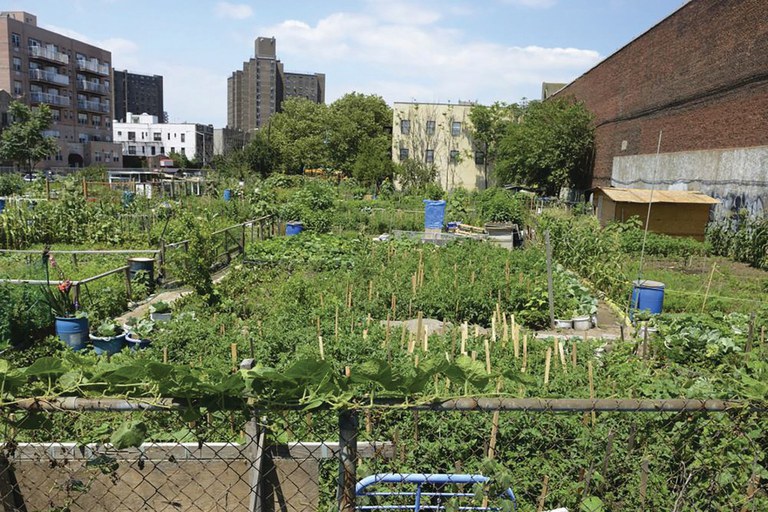Posted: March 17, 2022
Urban agriculture can help, but not solve, city food security problems.

With the COVID-19 pandemic exposing weaknesses in food supply chains, the focus on localizing food systems has sharpened, especially in and around big cities. Answering questions about how much food urban agriculture can actually contribute is more important than ever, researchers say. Photo: Getty Images/Boogich
While urban agriculture can play a role in supporting food supply chains for many major American cities--contributing to food diversity, sustainability, and localizing food systems--it is unrealistic to expect rooftop gardens, community plots, and the like to provide most of the nutrition for the population of a metropolis.
That's the conclusion of a team of researchers who analyzed the nutritional needs of the population of Chicago and calculated how much food could be produced in the city by maximizing urban agriculture, and how much cropland would be needed adjacent to the city to grow the rest. The study was the first to evaluate land required to meet food demand while accounting for a range of nutritional needs instead of only calories or quantities.
"There is a tremendous enthusiasm around the country for localized food systems and urban agriculture," said lead researcher Christine Costello, assistant professor of agricultural and biological engineering. "We wanted to determine how much nutrition urban agriculture really can contribute--to find out what's feasible--as well as how much land is required to meet the population's needs."
Now, with the COVID-19 pandemic exposing weaknesses in food supply chains, the focus on localizing food systems has sharpened, especially in and around big cities. Answering questions about how much food urban agriculture can contribute is more important than ever, Costello pointed out.
"Urban agriculture is attractive because it utilizes land or rooftops not currently used for food production and could increase habitat and biodiversity, enhance stormwater management, and provide fruits and vegetables, resulting in positive nutritional outcomes," Costello said.
In findings published in Environmental Science and Technology, the researchers reported that it is not possible--using the predominant commodities and common urban agricultural production of today--to meet the nutritional needs of Chicago within a radius under 400 miles, given the cropland and pastureland available, without fortifying foods with vitamin D and supplementing foods with vitamin B12.
--Jeff Mulhollem
Features
Breaking the Silence on Farm Stress
Farming has always been a demanding profession, but today's farmers face unprecedented pressures that can severely impact their mental health.
Biting Back
Research Targets Vector-Borne Diseases to Save Lives
Leading Forward
Ott brings deep connection to role of dean.


